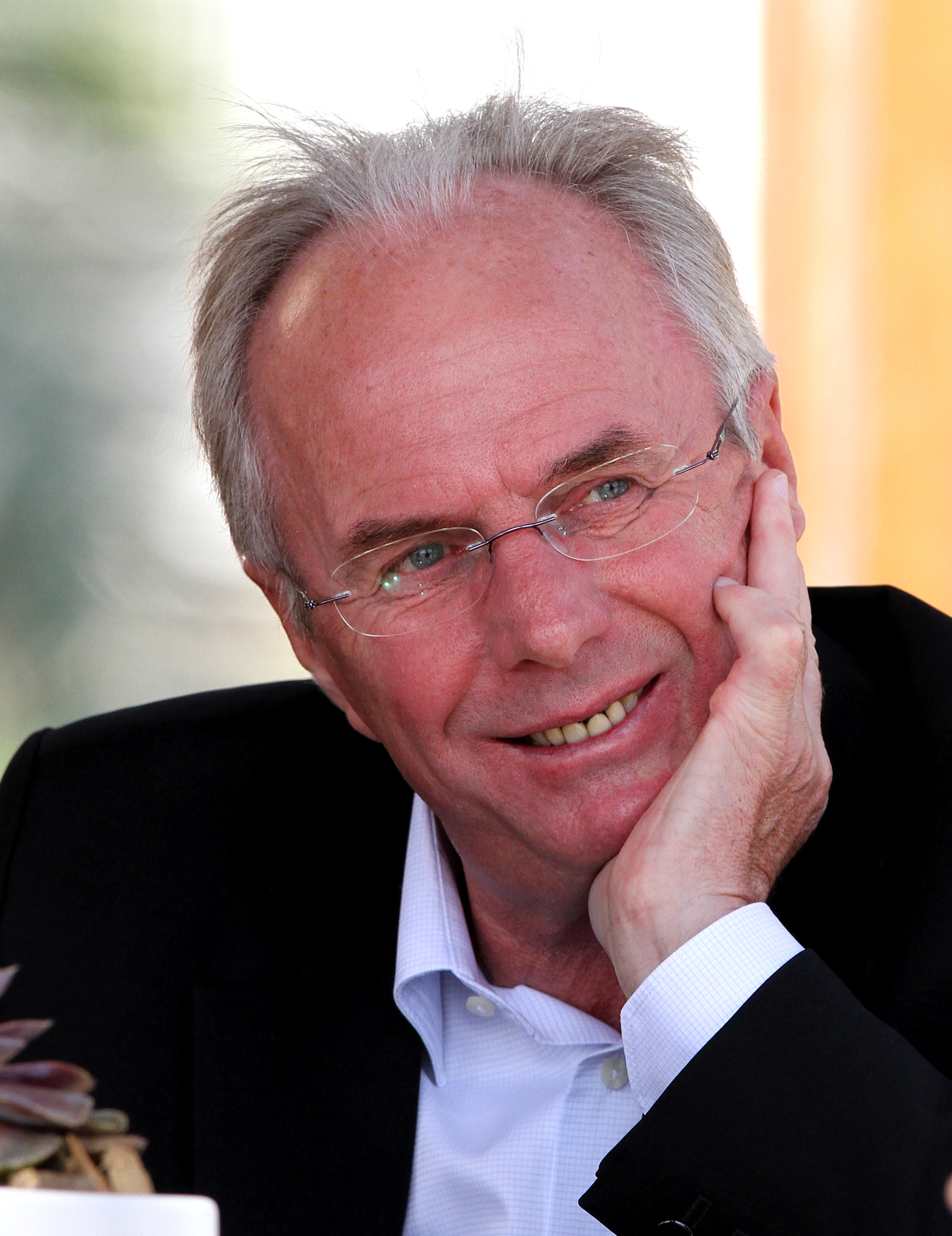The lasting genius of “Swedish pragmatics” in soccer and startups

- Swedish soccer coaches Sven-Göran Eriksson and Pia Sundhage redefined leadership.
- Their management style was rooted in a “Swedish pragmatic” approach to teamwork and collaboration.
- This ethos mirrored the leadership style that has driven many Swedish companies to global success.
On a stormy night in Munich’s Olympic Stadium in September 2001, the stage was set for an epic showdown. England, fighting for a place in the World Cup, faced its arch-rival: Germany.
The air was electric, charged with the anticipation of a battle that seemed destined for heartbreak. Germany’s dominance — and their fortress-like record — loomed over the English squad like an immovable force. For most coaches, the path forward would have been obvious: play it safe, defend deep, and hope for a moment of luck to scrape through with a draw. But Sven-Göran Eriksson, England’s newly appointed coach, didn’t believe in survival mode. Instead, he chose a strategy so audacious it seemed reckless. Eriksson’s plan was clear — unleash England’s attacking might, exploit Germany’s weaknesses, and aim for nothing less than total domination.
What followed was nothing short of breathtaking.
England dismantled Germany 5-1, silencing the home crowd and rewriting history. Michael Owen’s hat-trick was the centerpiece of the night, but the real star was Eriksson’s leadership. His decision to lean into the team’s strengths, rather than retreat into caution, defied expectations and defined the match. It was a victory born from calm pragmatism, a stark contrast to the fiery, authoritarian leadership styles often celebrated in sports.

Franz Beckenbauer, the German World Cup-winning player and former coach, later remarked: “I had never seen an England team playing better football. They had pace, aggression, movement and skill. It was fantasy football.”
Eriksson — who died in August 2024 — didn’t just win the game; he redefined what leadership could look like under pressure.
This quiet revolution in leadership didn’t begin on that night. Eriksson’s style was rooted in a distinctly Swedish approach to teamwork and collaboration, described recently as “Swedish pragmatic,” by business school professors who believe modern executives could learn from the approach.
Eriksson’s method wasn’t about charisma or commanding presence. Instead, it was about creating an environment where everyone could excel. Eriksson was never the loudest voice in the room — but he got results by empowering his players and staff, trusting them to rise to the occasion.
This ethos wasn’t just effective on the football pitch. It mirrored the leadership style that has driven many Swedish companies to global success. Stockholm, in fact, has been called a “unicorn factory” by the Wharton School. The stats back up this moniker: the Swedish capital has produced one of the highest number of billion-dollar startups per capita — second only to Silicon Valley.
And unlike their American peers, who tend to lionize founders — think of all the hagiographies of Steve Jobs, Mark Zuckerberg, Elon Musk, etc. — Swedish companies tend to embrace the team over the individual. “The notion of the entrepreneur in the garage or the small warehouse is romantic and true in many ways, but that doesn’t happen without a lot of other infrastructure,” says Wharton professor Exequiel Hernandez.
The Swedish capital has produced one of the highest number of billion-dollar startups per capita — second only to Silicon Valley.
A focus on cooperation, consensus, and adaptability has long defined Sweden’s approach to business. But this type of culture is perhaps easier to see on the sports field than it is in the boardroom. Eriksson’s calm, facilitative manner demonstrated that leadership doesn’t have to be about domination — it can be about enabling others to perform at their best.
The genius of this approach lies in its humility. Eriksson didn’t micromanage or cling to control. He brought in experts in fitness and psychology, trusting them to refine the team’s performance. This delegation wasn’t a sign of weakness; it was a recognition that specialized knowledge could strengthen the collective.
By focusing on the bigger picture, Eriksson built a system where individuals could thrive. This ethos of Swedish pragmatic leadership wasn’t unique to him in soccer — Pia Sundhage embodied it as well. As head coach of the U.S. women’s national soccer team from 2007 to 2012, Sundhage — a native of Ulricehamn, Sweden — delivered a masterclass in her country’s leadership style. She took over a team in turmoil, fractured by internal discord after a disappointing third-place finish at the 2007 World Cup. Tensions ran high following benched goalkeeper Hope Solo’s public criticism of her former coach, Greg Ryan.
Sundhage wasted no time setting a new tone. In her first team meeting, she sang Bob Dylan’s “The Times They Are A-Changin’,” signaling a shift from conflict to collaboration — and charting a path forward. Her leadership, calm yet firm, prioritized the team over the individual. She reintegrated Solo by asking the players a simple question: “Do you want to win?” Her point was clear — victory required unity, and the best players had to play, no matter past tensions. This inclusive approach reflected the Swedish emphasis on consensus and pragmatism.

Sundhage also transformed the team’s style of play, moving away from pure athleticism to a more technical, possession-oriented game. Under her leadership, the U.S. claimed two Olympic gold medals — and a runner-up finish at the 2011 World Cup. Her ability to steady the team in high-pressure situations, like the epic 2011 quarterfinal against Brazil, showcased her composed, results-oriented mindset.
Much like Eriksson, Sundhage excelled by empowering her players and fostering an environment of trust. She brought her guitar to practices, using music to ease tension and build camaraderie. Players appreciated her ability to blend joy with high expectations. Abby Wambach noted that Sundhage “showed me what it’s like to love the game,” while Hope Solo said Sundhage allowed players to “be individuals while showing us what a TEAM really is.”
By focusing on collective success over individual stardom, Sundhage epitomized Swedish pragmatism. Her leadership legacy goes beyond wins and medals: it proves that calm, collaborative leadership can achieve extraordinary results.
Takeaway #1: Empower, don’t control. Eriksson and Sundhage thrived by empowering those around them. Eriksson trusted his players and staff to do their jobs. Sundhage built trust through positive reinforcement and open communication. Both created environments where people felt valued and motivated to perform at their best. In organizations, this means giving people the autonomy to make decisions and take ownership of their roles. Leaders who empower their teams see better results because they foster creativity, commitment, and collaboration.
Takeaway #2: Flexibility wins the long bame. Both Eriksson and Sundhage were masters of adaptation. They adjusted tactics and strategies to fit the moment. Flexibility doesn’t mean a lack of structure; it means being open to change and willing to pivot when needed. This mindset is especially essential in today’s highly dynamic environment. For businesses, the lesson is clear: rigid adherence to outdated processes can be a liability. Organizations that embrace change and innovation are better equipped to navigate uncertainty and thrive in the long term.
Takeaway #3: Collaboration beats hierarchy. Collaboration was at the heart of Eriksson’s and Sundhage’s successes. Eriksson built consensus, involving players in decisions and fostering a sense of ownership. Sundhage created an inclusive environment where everyone understood their role and felt part of the team’s success. This approach is equally valuable in business. Leaders who prioritize collaboration over command create organizations that are more innovative and resilient. By valuing diverse perspectives and encouraging open dialogue, they unlock the full potential of their teams. The ultimate success: empowering others.
Ultimately, there is no greater marker of success as a leader than having your team show up to your funeral — not just to mourn, but to celebrate the way you helped them achieve their goals. Sven-Göran Eriksson’s passing in 2024 was met with an outpouring of love and respect from the players he guided.
David Beckham called him a “true gentleman” and said he would be “forever grateful” for being named captain under Eriksson’s leadership. Wayne Rooney, who made his England debut as a teenager under Eriksson, described him as a “special man” who gave invaluable help and advice during the early years of his career.
John Terry and Frank Lampard echoed similar sentiments, highlighting Eriksson’s calm and supportive style as key to their growth. As goalkeeper Kasper Schmeichel put it, Eriksson was the first manager to call him “world-class,” making him feel “10 feet tall” and inspiring the belief that would carry him to a Premier League title.
These tributes aren’t just about Eriksson’s tactics — they show the quiet power of Swedish pragmatism. He empowered others, built collaboration, and adapted to challenges, leaving a lasting impact. Leadership isn’t about domination. It’s about helping others thrive. Eriksson’s players didn’t just win; they grew. When a team remembers you not just for victories but for the humanity you brought — that’s the ultimate legacy. In the end, as Eriksson’s career reminds us, it’s not about the leader. It’s about the team.















